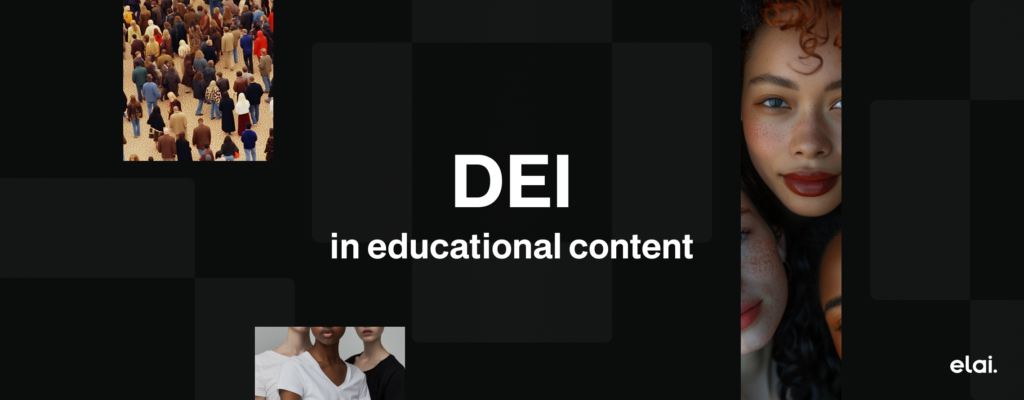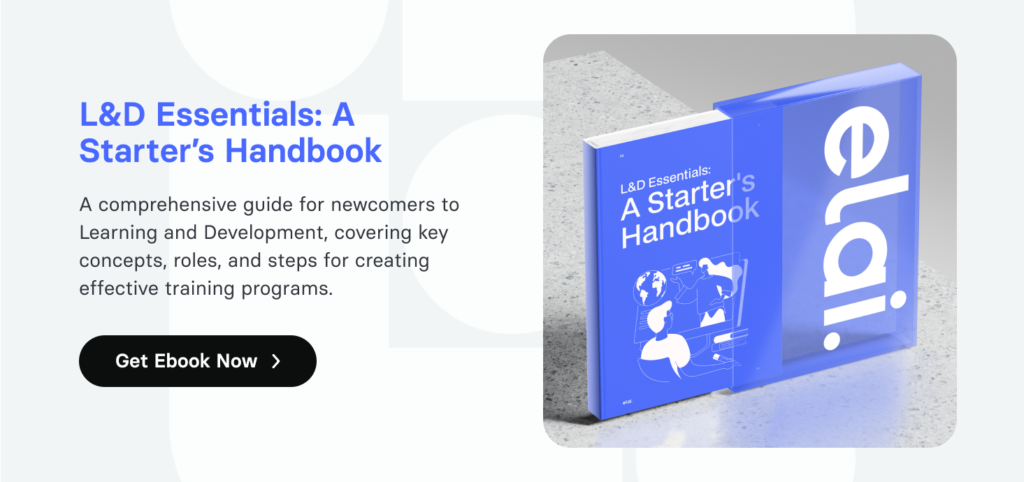In today’s complex and increasingly globalized business environment, incorporating DEI into training materials is essential for creating an inclusive, positive, and productive organizational culture. DEI education in the workplace focuses on creating values towards equality and diversity at the company while at the same time improving the company’s performance. However, there are a few challenges and considerations overcome with which DEI can become effective and long-lasting.
Why DEI in Education is Crucial
It is necessary to emphasize the importance of DEI in education and in developing a corporate learning culture that will be effective in making all the employees feel appreciated in the company. DEI-focused learning content is a way of making the organization more inclusive, creating new strategies, meeting the requirements of law, and contributing to the growth of employees. DEI principles can be integrated with the learning programs as a way of creating a positive organizational culture that results in high productivity in compliance with the rules and getting rid of prejudices and unequal opportunities for everyone.
The DEI learning content facilitates the change of organizational culture in such a way that all employees are accepted and welcomed based on their diversity. Therefore, DEI training practices that cover issues such as Cultural Blindness, Diversity, or Inclusive Management promote a healthy workplace environment. The above inclusive practices make employees satisfied with the job; therefore, there is a high retention rate among staff and a sense of unity among them. Also, the cohesiveness of a diverse group of employees is a strength because the team gets ideas from different sources, which is vital in problem-solving and innovation.
Today, numerous organizations have to consider numerous legal and regulatory requirements concerning DEI. Integrating DEI principles into the content of corporate learning enables the learners to implement the same in their workplaces hence avoiding discrimination and harassment. Appropriate DEI training contributes to the reduction of legal liabilities and enhances the staff’s well-being in the workplace.
One of the most significant benefits of DEI which is particularly relevant when considering the question “What is DEI in education?” is a real dedication to promoting DEI initiatives among employees and improving their satisfaction. It proves that the organization supports the input of workers of different backgrounds. DEI training fosters the employee’s growth enhancing the ability of the personnel in a workplace setting. This in a way leads to study satisfaction and enhances promotion on the job ladder in career lines.
Types of DEI Learning Content
The selection of the right formats supporting learning with content related to DEI is crucial to engaging employees and maintaining focus on DEI norms. Different formats can accommodate the various learner’s personas, thus increasing the effectiveness of the DEI training. Whether an organization’s training consists of e-learning modules and workshops as well as webinars and interactive activities, the particular type of learning format can affect employees’ ability to grasp and implement DEI ideas in their jobs.
1. E-Learning Modules
Online training is convenient and can reach a large number of employees since the learning modules are accessible at any time. Such modules may contain activities like Knowledge Checks where one must answer questions, realistic cases that must be solved, and simulations along with scenarios stated. Thus, e-learning is an excellent tool for conveying the basic concepts of DEI and can be quickly adjusted to the new standards.
2. Workshops and Seminars
On-site or remote classes offer chances for an active dialogue with the audience and other participants, role-play, or case studies. These sessions enable a more comprehensive learning experience as workers are able to question clarification, self-narrate, and discuss issues revolving around DEI.
3. Webinars
Webinars are synchronous or asynchronous presentations given via the Internet and may have a large audience. They are also useful when including the DEI in higher education as part of the course syllabus when sharing an outside specialist’s perspective and opinion, or when inviting a guest speaker. Webinars also include the Q&A section, where you can provide an on-the-spot clarification about DEI matters.
4. Interactive Learning Activities
DEI ideas are applied through activities that involve the students in group discussions and the case of simulations. Such practices assist in working on a number of skills and provide onsite experience while working on sophisticated projects, hence improving knowledge and ability.
5. Microlearning
Microlearning also presents materials and information in small and concise sessions; thus employees require less time to grasp something. It is especially suitable for regularly reminding employees of topics relating to DEI in short and engaging sessions that can be watched at the employee’s convenience.
6. Case Studies and Scenarios
The implementation of case studies and business cases give employees the opportunity to learn DEI in the form of case studies and execute practical problems. It suggests the analysis of these cases in order to comprehend the intricacies of DEI issues and the opportunities for their practical application in order to enhance learners’ approaches to DEI.
7. Mentorship and Coaching
Buddy and coaching services address employees’ individual needs and enable the solution of DEI issues and implementation of principles at work. Teachers or trainers provide advice, suggestions, and motivation; they contribute to personal development and promote tolerance.
8. Self-Paced Learning
Self-paced learning lets the employees go through the DEI material at their convenience thus helping those who cannot grasp information quickly or cannot spare many hours in a day. This approach may also utilize such components as videos, reading, or reflection activities which allows the employees to receive information in the manner that is most comfortable for them.
9. Video-Based Lessons
DEI content is effectively conveyed through videos since it is possible to create interesting lessons that incorporate the use of videos. Teaching DEI is also effective when it involves using videos as this approach narrows down to showcasing real-life examples, having expert opinions, as well as the use of drama by acting out different scenarios. This format assists the reach and appreciation of specialists as it enriches the learning mode of employees in key issues. However, the implementation of lessons in videos is practical when presenting complicated scenarios and showing real-life DEI in education examples.
Challenges and Considerations
However, incorporating DEI into corporate learning forms part of good practice, and it should be noted that it is not without its concerns. These have to be done effectively to make sure that changes driven by DEI are Long-term and as well make an impact. To address the challenge of effectiveness in DEI, it is crucial to identify the powerful forces of resistance to change, Failure to go beyond cheap veneers, Relevance of the content, Management of resources, and Recreation of engagement.
Resistance to Change
It is important to note that companies’ workers could disrespect DEI efforts because of pessimism or fear of the new shift. For this, there is a need to engage in proper communication and explain how DEI enhances the organization, and what values DEI upholds. Involve employees when it comes to content production and get the key leader’s support to address the necessary change resistance.
Superficial Compliance
DEI can become a box-checking exercise if it is not carried out as part of an organization’s true change. DEI should be seen more as a process that is constantly being updated based on feedback from the employees, not forced by external obligation.
Ensuring Engagement
Developing DEI content that is relative to each worker and easily understandable is not always easy. To increase the representation, you must engage a large number of stakeholders in the process of making a development. Ensure the content reflects the population and is in a format to reach all types of Learners and any disability they might have.
Measuring Impact and Effectiveness
Evaluation of DEI training can be cumbersome. Establish mission and goals and incorporate measurable indicators both in volume and quality to assess the outcomes. Gather information from the employees and use the data generated concerning their performance to affect better decisions.
Resource Constraints
Creating and sustaining DEI content is rather resource-intensive. Focus on strategic projects and possibly outsource some tasks to consultants or other outside sources. To control expenses and enhance the audience, therefore, utilize such solutions as e-learning.
Maintaining Engagement and Momentum
There are some issues concerning retaining participants’ attention to Diversity, Equity and Inclusion in Educational Content in the long run. To increase the interest, the content should be updated and learning formats should be different. Include DEI policies as a part of the company’s day-to-day operation and reward accomplishments to continue focus and engagement.
Conclusion
The adoption of DEI principles to the learning material that corporate organizations use in their training is crucial in the development of the modern workplace. Addressing DEI in corporate learning goes beyond an obligatory compliance activity resulting in benefits for the whole company in multiple ways and improve employee happiness.
FAQ
What does DEI stand for in education?
In the field of education, DEI stands for Diversity, Equity, and Inclusion. These principles aim to create an educational environment where all students, regardless of their background, identity, or abilities, have equal access to opportunities, resources, and support. Diversity focuses on recognizing and valuing the differences among students, such as race, ethnicity, gender, and socioeconomic status. Equity gives every learner the environment and the resources required to perform well for the reason that students will need different degrees of help. Basically, inclusion is a method of educating the students whereby all the students are respected and all are allowed to participate in every aspect of schooling activities and are considered important individuals in any school.
Why is DEI important in education?
DEI is essential in education because it creates a learning environment that is accessible and favorable to all students. To address the social justice topic, it is important that companies promote diversity in their teaching and interaction, allowing learners to understand how to work in a multinational environment and respect diversity. Equity makes provision for the fact that each learner because of his or her background whether it is socially, economically, or academically disadvantaged has the tools and chances. Mainly, inclusion enables each learner to feel that they are an essential member of the team and this creates a platform that gifts improved results.
What is the role of DEI in education?
DEI in education refers to how areas of diversity, equity, and inclusion are employed in education to make it more effective for all learners. It means the provision of measures and strategies aimed at reducing gaps in attainment levels: for instance, between Black and White learners, or low-income and high-income learners. Education DEI initiatives can involve, culturally affirming pedagogy, development of diverse content, and staff training on DEI. DEI thus must be incorporated with regard to all the segments of education to address the individual needs of learners and fight discrimination as well as bring society closer to equality.

